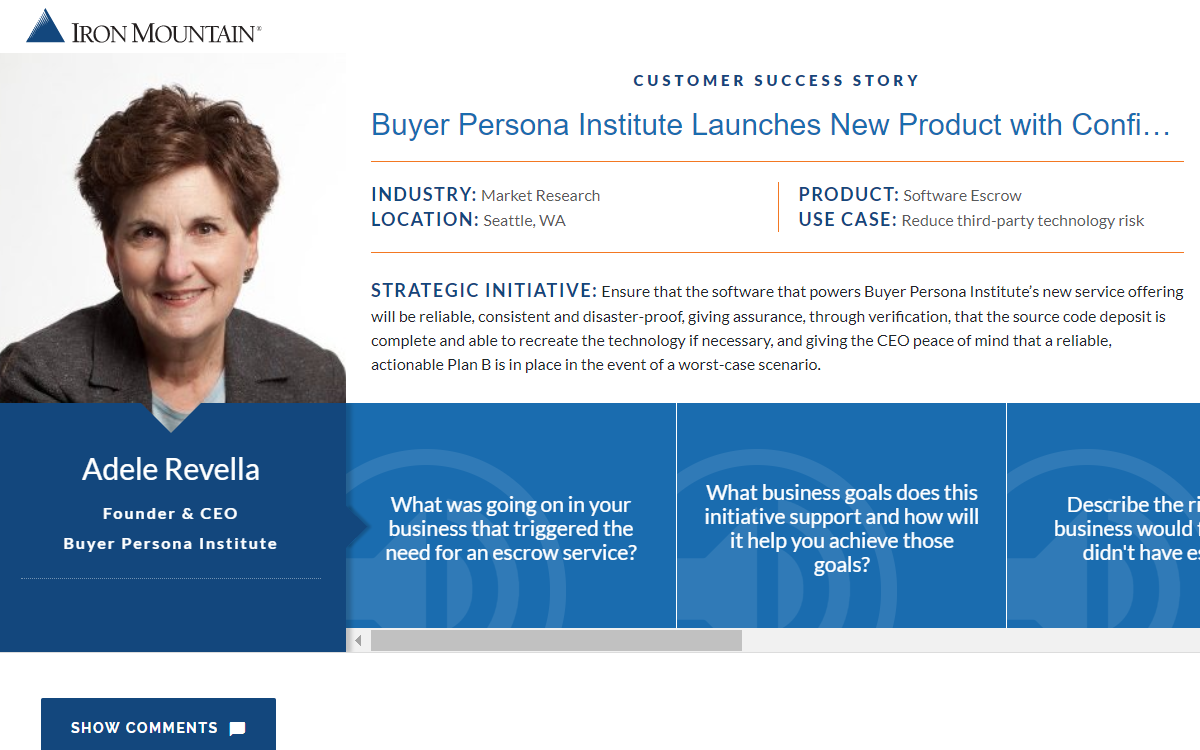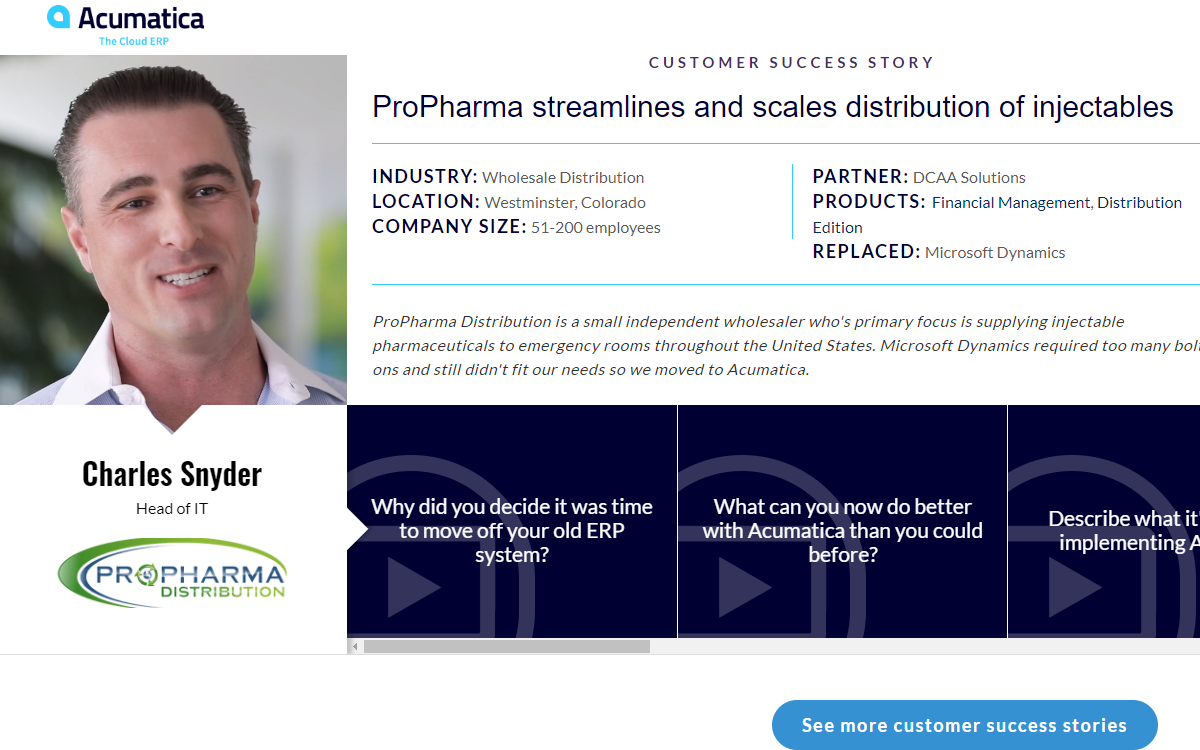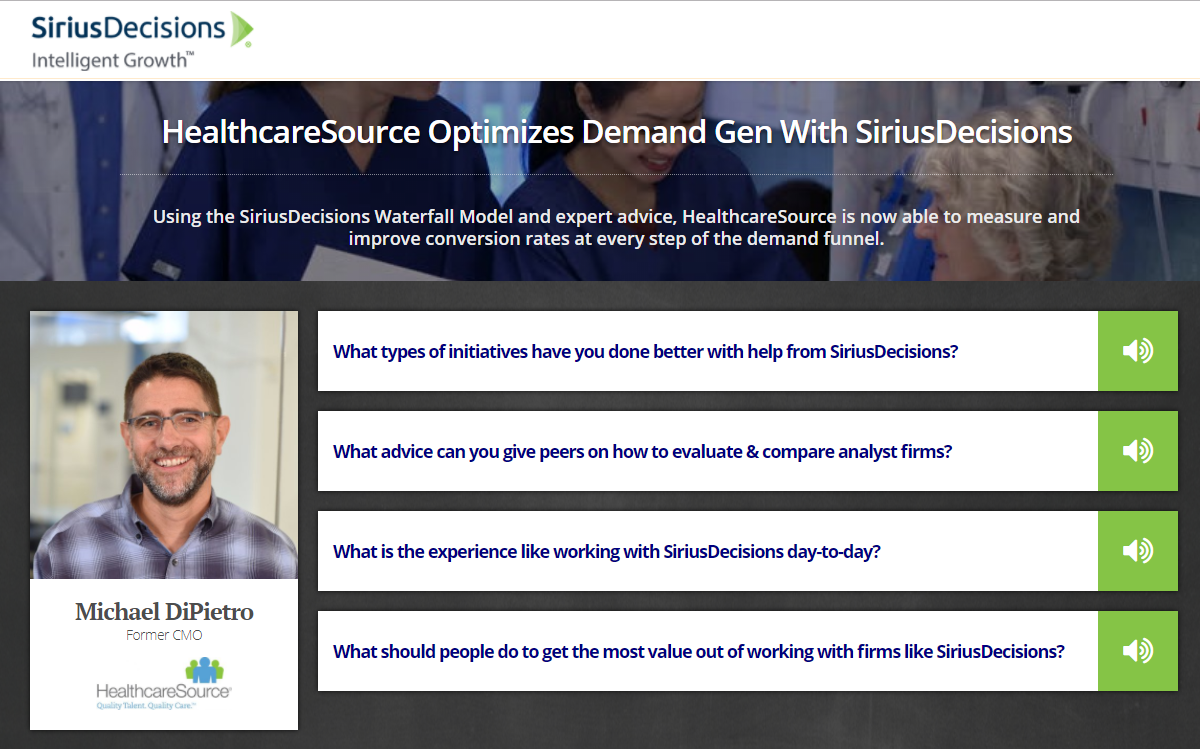Why? Buyers don’t want to read them. The classic customer case study rarely addresses the specific, nagging, questions, fears or doubts that buyers have. And they’re painful and expensive to produce.
Today’s customer case study is created opportunistically. Here’s how it happens in nearly every B2B company in the world:
- Sales manager says “we need more customer case studies to cover all of our markets.”
- The well-meaning marketer puts out a plea to the sales, services and support teams: “Please, do you have any customers who are willing to do a customer case study?” And of course, there’s always a million reasons why it’s not a good time to ask a customer to take on such a burden.
- Once in a while, a customer raises their hand and says “OK, I’m willing.”
- So then the stream of emails starts, trying to coordinate a time for the marketer to talk to the customer to make sure they are on board and can get all the legal and PR approvals.
- They bring in the professional writer who is a retired journalist and gifted storyteller to interview the customer, spending an hour asking questions meant to get the customer to exude her praises for the vendor and product along with her ROI metrics.
- The writer assimilates everything he heard, and writes a first draft of the customer case study that doesn’t contain any of the raw emotion or real “story” of the anguish, pain, and eventual success achieved by the customer, instead it is full of the company’s marketing-speak that reinforces the company’s generic benefit points and promises.
- Another 3 weeks of back and forth, feedback from the client and edits by the writer, until the completely sanitized version of the customer case study is ready.
- Then it’s formatted. And don’t even get me started on the format. Every customer case study in the world (prove me wrong, someone) follows the same format…It’s a 2-4 page PDF, following the “Challenge, Solution, Results” format with the obligatory “happy quote” in the sidebar.
- It’s time to start the final approval process. The customer’s legal folks are worried because the “happy quote” is an endorsement of your solution. So it gets further watered down.
- You’ve got the approval, and the customer case study is posted to the sales portal, and included in the next “marketing newsletter to sales”, and the PDF is published to the website.
- Nothing happens with it until a sales rep asks someone in marketing, “Do we have any case studies for Manufacturing companies?” and the marketer emails the rep the PDF. The sales rep usually knows something about the biggest fear that is holding the manufacturing buyer back, but doesn’t read the customer case study, has no idea what it says, just sends it to the prospect as an email attachment and hopes something in there convinces the prospect to buy. Throwing spaghetti against the wall.
And this is the best case. It often breaks down or gets aborted somewhere along the line.
What’s the end result? A PDF customer case study that is so generic, high-level, and full of marketing-speak that it doesn’t help buyers.
Here’s the test: take one of your customer case studies, put your competitor’s logo at the top, and does it still sound like a plausible story? All your competitors use the same format and use the same messaging. How is this helpful to a buyer?
It’s not. The real reason the classic customer case study is not helpful is because buyers have specific questions, fears, and doubts (QFDs) that arise at every point in their journey. They need those QFDs answered before they have the trust to move forward to the next step, where another QFD arises. Now that QFD needs to be answered. And so on.


